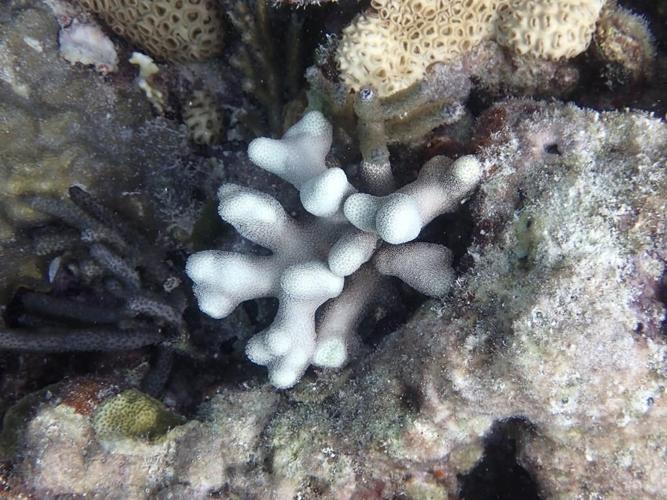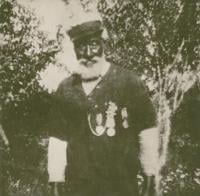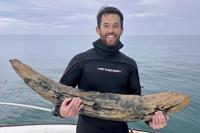FORT LAUDERDALE, Fla. (AP) — Some Florida Keys coral reefs are losing their color weeks earlier than normal this summer because of record-high water temperatures, meaning they are under stress and their health is potentially endangered, federal scientists said.
The corals should be this time of year, but are swiftly going white, said Katey Lesneski, research and monitoring coordinator for Mission: Iconic Reefs, which the ������ϲʹ������� Oceanic and Atmospheric Administration launched to protect Florida coral reefs.
“The corals are pale, it looks like the color’s draining out,” said Lesneski, who has spent several days on the reefs over the last two weeks. “And some individuals are stark white. And we still have more to come.”
Scientists with NOAA this week raised their coral bleaching warning system to Alert Level 2 for the Keys, their highest heat stress level out of five. That level is reached when the average water surface temperature is about 1.8 degrees Fahrenheit (1 degree Celsius) above the normal maximum for eight straight weeks.
Surface temperatures around the Keys have been averaging about 91 degrees (33 Celsius), well above the normal mid-July average of 85 degrees (29.5 Celsius), said Jacqueline De La Cour, operations manager for NOAA’s Coral Reef Watch program. Previous Alert Level 2s were reached in August, she said.
Coral reefs are made up of tiny organisms that link together. The reefs get their color from the algae that live inside them and are the corals’ food. When temperatures get too high, the coral expels the algae, making the reefs appear white or bleached. That doesn’t mean they are dead, but the corals can starve and are more susceptible to disease.
Andrew Bruckner, research coordinator at the Florida Keys ������ϲʹ������� Marine Sanctuary, said some coral reefs began showing the first signs of bleaching two weeks ago. Then in the last few days, some reefs lost all their color. That had never been recorded before Aug. 1. The peak for bleaching typically happens in late August or September.
“We are at least a month ahead of time, if not two months,” Bruckner said. "We’re not yet at the point where we are seeing any mortality ... from bleaching. It is still a minor number that are completely white, certain species, but it is much sooner than we expected."
Still, forecasting what will happen the rest of the summer is hard, De La Cour and Bruckner said. While water temperatures could continue to spike — which could be devastating — a tropical storm or hurricane could churn the water and cool it down. Dusty air from the Sahara Desert moving across the Atlantic and settling over Florida lowering temperatures.
Because of climate change and other factors, the Keys waters have lost 80% to 90% of their coral over the last 50 years, Bruckner said. That affects not only marine life that depends on the reefs for survival, but also people — coral reefs are a natural buffer against storm surge from hurricanes and other storms. There is also an economic impact because tourism from fishing, scuba diving and snorkeling is heavily dependent on coral reefs.
“People get in the water, let's fish, let's dive — that's why protecting Florida's coral reef is so critical,” De La Cour said.
Both scientists said it is not “all doom and gloom.” A 20-year, large-scale effort is underway to rebuild Florida's coral back to about 90% of where it was 50 years ago. Bruckner said scientists are breeding corals that can better withstand the heat and are using simple things like shade covers and underwater fans to cool the water to help them survive.
“We are looking for answers and we are trying to do something, rather than just looking away,” Bruckner said.
Breeding corals can encourage heat resistance in future generations of the animals, said Jason Spadaro, coral reef restoration program manager for Mote Marine Laboratory & Aquarium in Sarasota, Florida. That could be vital to saving them, he said.
Spadaro and others who have visited the corals said they have noticed the coral bleaching is worse in the lower Keys than in the more northern parts of the area. The Keys have experienced bad bleaching years in the past, but this year it is “really aggressive and it's really persistent,” he said.
“It's going to be a rough year for the reef. It hammers home the need to continue this important work,” he said.
The early bleaching is happening during a year when water temperatures are spiking earlier than normal, said Ross Cunning, a research biologist at Shedd Aquarium in Chicago. The Keys are experiencing water temperatures above 90 degrees Fahrenheit (32 degrees Celsius), which would normally not occur until August or September, he said.
The hot water could lead to a “disastrous bleaching event” if it does not wane, Cunning said.
“We're seeing temperatures now that are even higher than what we normally see at peak, which is what makes this particularly scary,” Cunning said.
De La Cour said she has no doubt that the warming waters are caused by human-made global warming and that needs to be fixed for coral to survive.
“If we do not reduce the greenhouse gas emissions we are emitting and don't reduce the greenhouse gases that are already in the atmosphere, we are creating a world where coral reefs cannot exist, no matter what we do," she said.
___
Whittle reported from Portland, Maine.
___
Associated Press climate and environmental coverage receives support from several private foundations. See more about AP’s climate initiative . The AP is solely responsible for all content.














































